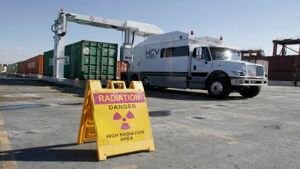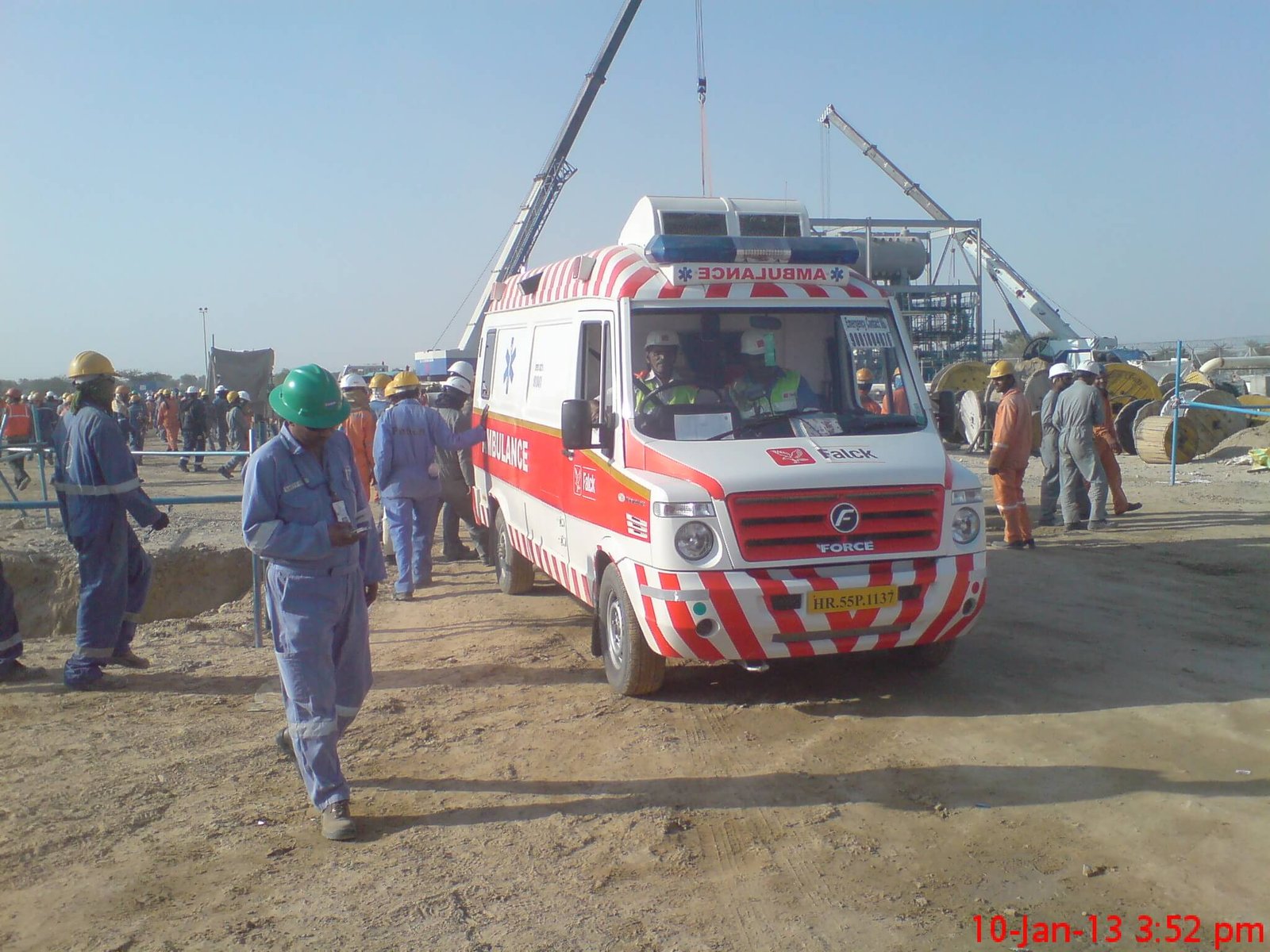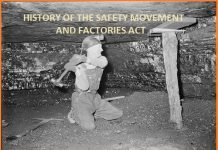The Central Government u/s 30 of the Atomic Energy Act, 1962, made these rules applicable from 3010-1971 , to the whole of India. A summary of these 56 rules is given below
Section-2 defines adequate protection, competent authority, contamination, employer, radiation worker, operational limits, radiation installation, radiation surveillance, Radiological Safety Officer, sealed and unsealed source, source housing, useful beam etc.
Other provisions are as under
- Radioactive material is to be handled as per terms and conditions of a license.
- Luminous compounds on watches, instruments etc. are exempted.
- No person below the age of 18 years can be employed as a radiation worker.
- License can be issued on request under the Act, if the equipment, facilities and work practices afford adequate protection and if the in charge person has adequate qualification to direct the work. The validity of license is 3 years. It can be revoked, modified or withdrawn by the competent authority after giving a show cause notice and an opportunity to make a representation. Radioactive material shall be used only for the purpose, location and quantities specified in the license.
- Radiological Safety Officer shall be designated by the employer (himself or an employee) with the approval of competent authority to perform following duties and functions (R. 13)
- Steps to ensure that operational limits are not exceeded.
- To instruct the radiation workers about hazards of radiation and safety measures to minimize exposure to radiation and contamination.
- To carry out leakage tests on sealed sources as specified in rule 34.
- To regulate the safe movement of radioactive materials including waste.
- To investigate and suggest remedial measures in respect of any situation that could lead to radiation hazards.
- To make available necessary reports and remedial measures to his employer.
- To ensure the safe disposal of radioactive wastes in a manner approved by the competent authority.
- Hazardous situation is to be reported to the competent authority.
- Radiation surveillance procedure notified by the competent authority is to be followed by the employer. This may include (R. 15)
- Design, construction, operation and use as per specifications and prior approval of the competent authority.
- Working conditions, monitoring and personal protective equipment.
- Personal monitoring of radiation workers.
- Medical examinations of the radiation workers as per rule 19 or 20.
- Records of radiation and radioactivity level measurements, personal monitoring and medical examinations stipulated by the competent authority.
- Any other procedure specified by the competent authority.
- Prior approval before any modification to the plant or any change in working conditions.
- Radiation symbol to be displayed at workplaces and on containers containing radioactive materials its color shall be as may be specified by the competent authority.
- History records of radiation workers to be maintained in a form specified by the competent authority.
- Pre and periodical yearly medical examinations of radiation workers, of blood, excreta, skin, hands, fingers, finger nails, eyes and chest (X-ray).

The frequency and types of above examinations may be modified by the competent authority where necessary (Rule 19 & 20). Complete records of above examinations shall be maintained. Its excerpts shall be sent to the competent authority in the form specified by him. The competent authority shall preserve such records for the life time of the worker or for 20 years after he ceases to do work of radiation, whichever is shorter.
- The competent authority may specify steps to reduce the excessive exposure and the employer shall comply with them and also provide the exposed worker an alternative work not involving radiation exposure. If such worker is declared fit to resume radiation work, his employer shall permit him to do that work. Then his work shall be planned by the competent authority.
- The competent authority or a person duly authorized by him has wide power to inspect new, modified or running radiation installation, work being conducted protective device, transport etc. and make tests, measurements and other things to verify adequate protection. Power includes power to seal or seize radioactive material or equipment and give directions for compliance.
- Registers of particulars of sealed and unsealed sources shah be maintained (Rule 33).
- In case of leakage of a sealed source, the Radiological Safety Officer shall place that leaking source in a properly shielded leak-proof container with care to prevent spread of contamination, act to safeguard the workers and others, vacate affected area, clean up contamination if any, and inform the employer.
- Lost or missed radioactive material shall be searched and the competent authority shall be informed immediately.
- Telegamma sources shall be covered with appropriate source housing. In case of power failure, the useful beam should be automatically cut off. Manual device to interrupt the useful beam is required (Rule 37 to 39).
- In medical institutions where radioactive material remains on or inside the body of the patient, separate room’s arid wards for the treatment shall be provided.
- Where gamma radiography is done, the area shall be cordoned off to control entry into it of other persons.
- Sealed source devices such as static eliminators, thickness, density or level gauges, package, and monitors shall be provided with efficient cover plate, shutter or shield capable of being easily operate able to attenuate the useful beam.
- Interlock switches in radiation installations should be of the fail-safe type.
- Unsealed sources shall be kept in securely closed container and properly handled. Radiological Safety Officer has to take more precautions were unsealed sources are handled such as safe working methods, facilities to minimize radiation level and airborne contamination, forbidding wrong working habits (mouth operated devices, open wounds, smoking, eating, drinking, application of cosmetics etc.), appropriate protective clothing, safe use of PPE and checking contamination on it and safe collection of radioactive wastes (R44 & 45).
- Ventilating systems should be enclosed with ducts and filters to avoid spread of any airborne contamination.
- In case of spillage, steps to arrange decontamination of affected personnel and areas, steps to prevent further spread of contamination and informing the employer.
- Other provisions for experiments on animals, aluminizing compounds, approved procedure for mining, processing etc., disposal of animal carcasses, autopsies of cadavers, license, personnel monitoring and power to exempt are given in rules 48 to 56.
Notes on Regulatory Aspects
Radioisotopes and radiation have found a variety of applications in industries, such as non-destructive testing, level indication system, thickness gauges, density gauges, etc. There are over 1200 industrial institutions in India, employing radiation source, in one form – or the other. It is a well-known fact, that ionizing radiation such as X-rays, gamma rays; beta rays, etc. are deleterious to health. It is therefore, essential to minimize radiation exposures to the user as well as to the public. If the use of these radiation sources is not adequately controlled, it is likely to result in unnecessary radiation exposures to individuals. However, if necessary safety precautions, as per the stipulate norms, are observed by the user, the ill-effects of radiation can be minimized, thus rendering the application quite safe for the user.
The prospective user should approach the Competent Authority for obtaining permission to handle radiation sources. He must give the requisite details in the prescribed application form regarding the type of source, its activity, proposed use, name of the user his qualification and experience in the handling of radiation sources etc.
A pre-commissioning inspection of the installation is properly done by members of Radiation Protection Services Division (RPSD), Bhabha Atomic Research Centre (BARC), Bombay-400085, in order to confirm the above.
A separate storage enclosure should be available at the site for safe storage of the source housings, prior to their installation and also to store, spare source housings and decommissioned gauges awaiting ultimate disposal, if any. The source storage should be so chosen, that it would be free from potential fire hazard, flooding, water logging, pilferage etc. Advice on the nature of storage facility required may be obtained from the Competent Authority.
All the persons who are involved in the operation and maintenance of these gauges should have adequate knowledge in the design, construction and principle of the gauges and they should have undergone appropriate training on the radiation safety aspects. Further, if deemed necessary, all those persons who are involved in the maintenance of radioisotope gauge may have to be monitored regularly, by the personal monitoring service; run by RPSD, in order to ensure that dose limits are not exceeded. The decision regarding the need for the persons to be monitored by the personnel monitoring service will be taken after the pre-commissioning inspection of the installation by members of RSPD.
A GM type radiation survey meter (model MR 121) manufactured by the Electronic Corporation of India Ltd. (BCIL), Hyderabad or its equivalent should be available with the user of the nucleonic gauges, for regular monitoring of radiation levels around the gauge installation and also for deciding the area to be cordoned off around the source, if an emergency arises.
The user should designate a Radiological Safety Officer, who possesses a certificate in radiation safety which is recognized by RPSD and who has received instructions in the Radiation Protection Rules 1971 and all notifications and orders issued there under, relevant to the proposed application of radiation and who has demonstrated competence in the handling of radiation exposure devices and related instruments and radiation survey meters, which would be used in the course of this assignment. Formal approval should be obtained by the user, from the Competent Authority, for the appointment of Radiological Safety Officer.
The requisite authorization for the procurement of nucleonic gauges from any Indian manufacturer or the requisite ‘No Objection Certificate’ for the-import of nucleonic gauges of specific type from abroad will be issued by the Competent Authority after the fulfillment of the above requirements by the applicant. All these regulatory controls have been evolved, in order to ensure safety to persons and property, during the use of these gauges.





